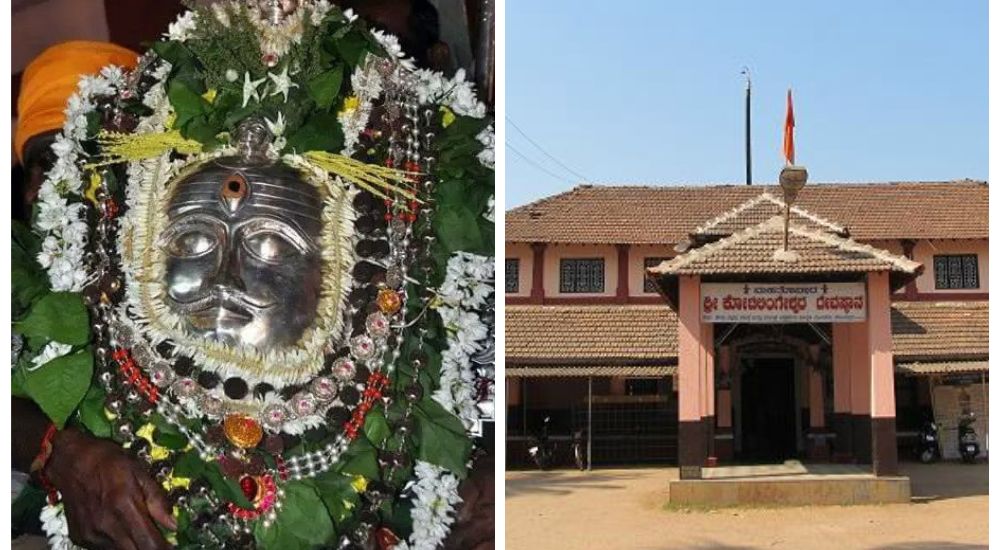In the town of Kundapura, west of the Arabian Sea, near the 4-acre Koti theertha lake, is the Koteshwara temple, which is dedicated to Lord Shiva. One of the seven Parashurama Srishti Khetras, the temple is claimed to have been founded by Saint Parashurama. It is one of Karnataka’s seven muktistalas. It is reported that Lord Brahma worshipped Kotilingeshwara here. The annual automobile festival held in the month of Vrishcika attracts many people from around the nation.
| Temple Name | Kotilingeshwara Temple |
| Temple is also known as | Koteshwara Temple |
| Temple Dedicated to | Shiva |
| Temple Timing | 5:00 AM to 9:00 PM |
| Aarti | Om Jai Shiv Omkara |
| Darshan Fee | Free Entry |
| VIP Entry | Not available |
| Live Darshan | Not available |
| Important Festivals | Maha Sivaratri, Kodi Habba |
| Address | Carstreet Area, Koteshwar, Udupi, Karnataka 576222 |
| Official Website | Not available |
| Contact Number | Not available |
| Official Email ID | Not available |
About Kundapura Koteshwara Temple
Koteshwara is a village located in the Udupi district close to Kundapur. Kundapur is 4 kilometers from Koteshwara. Koteshwara’s primary attraction is the Kotinatha or Kotilingeshwara temple. In addition to the shrines of Subramanya, Ganapati, Gopala Krishna, and Jyestha-Lakshmi, Koteshwara contains numerous more tiny temples.
A large lake is located close to the Koteshwara Temple. It is said that underground tunnels connect this temple to a 20-kilometre-away location known as Vandaru Kambala Gadde via the lake, which is the subject of various urban legends. Several other significant temples, such as the Pattabhiramachandra Temple and the Kodandarama Temple, are also nearby.
Hundreds of Hindu devotees from Karnataka and neighbouring states like Kerala visit this location yearly. This location has good road access to Kundapur. There are frequent bus connections to Koteshwara from Kundapur. The closest airport is located in Mangalore. In Mangalore, there are numerous hospitable accommodations.
Legend
Legends say that a million wise people came to the place and did penance to Lord Shiva. The Lord showed up before each of them because he was so happy with how much they cared. So, the place became known as Kotee-Ishwar, which later changed to Koteshwar.
Temple Architecture
The temple is built in the style of a typical temple in Kerala. People say this temple has seven “prakara” (circular paths around the central deity). Two different shrines can be found diagonally across from the main shrine. One shrine is for Goddess Parvati, and the other is for Goddess Dhandeswari (Utsav idol – bronze idol). Everything in this temple is amazing and one of a kind. The street for cars is very wide, like the one at Puri Jagannath.
People say that this temple has seven Prakara. The outermost prakara is now a concrete road with doors on all four sides of the temple. Outside the temple, a 10′ x 10′ platform leads to the main entrance. From this platform, one can look straight at the god.
The main door, which faces east, is about 10 feet wide and 25 feet tall. There is a big “Dwajasthambha” about 100 feet tall, and a small ” Nandi ” on top of that.” The second prakara is also very wide and has many big stone plaques (shila-shashana) that tell the temple’s history. Since no one knows how to read them, we still need to learn more about the temple’s past. The main attractions in this prakara are the main kitchen hall, the water tank in the shape of a “Damaru,” and the small temples of Shri Ganapathi, Shri Mukhyaprana, and Shri Venu Gopalakrishna.
The temple’s main building is next door. The temple is made of granite stone and is a rare and amazing building. It was built many centuries ago. The huge pillars, slabs, and roof sheets are all granite stones. It is hard to imagine how they built such a big temple without modern tools and technology.
This third prakara has a lot of small temples, like Sapta Matarikas, Subramanya, Venkatramana, and Mahisasura Mardhini. One of the most interesting gods is called “Kali Laxmi,” and she has a child in one hand and a broom in the other. Seeing such a unique statue is very interesting. The Purana behind this has yet to be revealed, which is a shame. There is a big Nandi, and as in any other Shiva temple, there are a lot of stones in this prakara that represent the “buta gana.” From here on in, the garbagudi starts. On either side of the door are two big, full-size bronze statues of Nataraja.
At this entrance, Shri Vadiraja’s shlokas are written in big letters so devotees can read them and pray to the Lord.
Darshan Timing
The Koteshwara Temple is open from 5:00 AM to 9:00 PM.
Dresscode While Visiting the Temple
Followers are told to dress cleanly and modestly.
Temple Festival
| Month | Festival |
| March | Maha Shivratri |
| November | Kodi Habba |
Local Culture
Kundapura is a town on the West coast surrounded on three sides by water. It is a big religious center where people worship at Kollur Mookambika, Udupi, and other nearby temples. The town is mostly made up of Hindus from many different groups. People here also speak Konkani and Tulu, in addition to Kannada.

